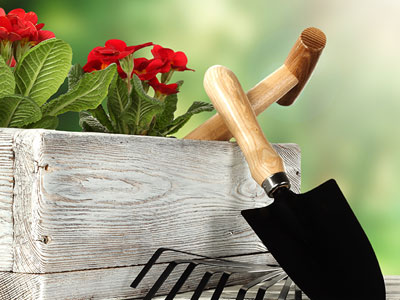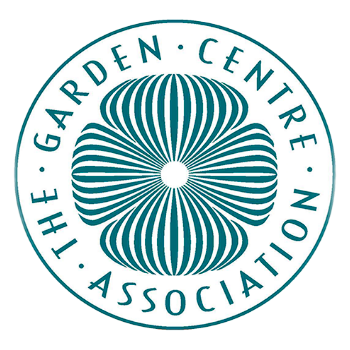Monthly Gardening Advice – July

JULY
Lawncare
- Mow the lawn weekly and remember to add the clippings to your compost heap.
- Last chance to apply a liquid summer feed, especially if you did not apply a spring feed. If there are weeds present a feed and weed may be useful (do not apply to newly laid or seeded lawns).
- New areas of grass, either sown or turfed in the spring, will need extra water to keep them going through their first summer so when using a sprinkler use a jam jar in the middle of the lawn once the jar has 10-13mm (½ in) in the bottom the lawn has had sufficient water.
- During dry periods cut the lawn a little longer and invest in a mulching mower to help the lawn retain moisture.
In mid-summer some lawns may get heavy infestations of ants. Brushing out the nests on a dry day is the best method of control, prior to mowing. - Isolated weeds can be removed by digging out or by using a paint-on weed killer as a spot treatment.
Houseplant Care
- Many indoor plants benefit from being placed outside on the patio during the summer.
- Ventilate and shade sunrooms and conservatories to prevent scorch damage to leaves.
- Freely water and feed as necessary (as per the manufacturer’s instructions.) Try and water early mornings or late evenings to avoid evaporation and scorch.
- Start taking cuttings of fuchsias and pelargoniums.
- Check plants for red spider mite, glasshouse white fly, mealy bug and scale insect on a regular basis.
Jobs To Do In The Garden
- Water tubs and new plants if dry.
- Deadhead faded flowers to encourage more and prolong the flowering period.
- Cut back delphiniums to encourage second flush of flowers and give them a feed after cutting back.
- Summer is also the best time to tackle perennial weeds when they are growing. Either by digging out or applying a weed killer, which can be more practical, especially for larger areas.
- Mulch around shrubs, roses and trees to help prevent moisture loss and suppress weeds.
- Pinch out leading shoots on chrysanthemums and helianthus to encourage bushy plants.
- Leyland cypress hedging can be clipped as necessary during the growing season.
- Start collecting seed for plants you wish to grow next year such as calendula, love-in-the-mist and poppy.
- Fill gaps in borders with annuals.
- Prune June flowering shrubs like philadelphus and weigela after flowering.
- Liquid feed containers.
- Check for green fly and black fly on young shoots or stems.
- Check for clematis wilt.
- Hoe borders to prevent annual and perennial weeds from establishing.
- Check for first signs of vine weevil damage.
Jobs To Do In The Greenhouse
- Remember to ventilate the greenhouse on sunny days and on the warmest days you may need to damp the flooring down to increase the humidity.
- Give plants more space as they grow to help avoid pest infestations.
- Carry on pricking out any seedlings, which are big enough to handle.
- Pelargonium cuttings can be taken this month.
- Check for vine weevil larvae in containers.
- Harden off half-hardy annuals, which have been started undercover and need acclimatising to the outside environment over a period of a week or so ready for planting in their final position.
- Used shade paint on outside of greenhouse or blinds to stop temperatures soaring
- Check plants regularly for water.
- Regularly inspect plants for pest and disease.
The Vegetable Garden
- Last chance to sow French beans and runner beans.
- Sow cabbage, turnips, fennel and autumn-winter salads.
- Carrots can be sown, beware of carrot fly and thin existing seedlings.
- Change to high potash feed for container grown fruit.
- Continue consistent supply of water to help avoid diseases, disorders and bolting.
- Water tomatoes and peppers regularly to avoid blossom end rot.
- Watch out for potato blight and tomato blight.
- Protect brassicas from pigeons.
- Summer prune red currants, white currants and gooseberries.
- Protect carrots with enviromesh to stop damage from carrot root fly
- Remove suckers from around the base of fruit trees.
- Pinch out growing tips on outdoor melons twice, at four-week intervals.
- Continue to harvest indoor spinach, peas, beans carrots, potatoes, salads, raspberries, and cherries,
- Strawberries, gooseberries, red and white currants.
- Hoe off weeds in dry weather.
- Climbing beans may need to be stopped to maximise cropping on existing side shoots.
Treat apple scab. - Pinching out the top of broad beans once the lowest flowers have set will help prevent aphid attack.
Wildlife & Bird Care
- Do not prune roses that produce hips by dead-heading.
- Keep birdbaths topped up with water.
- Mow recently established perennial meadows but not annual cornfield meadows.
- Plant Marigolds around the vegetable patch to attract hoverflies.
- Avoid chunky foods that could choke young fledglings.
- Use wildlife friendly slug pellets if chemical control is needed.
- Trim hedges less frequently to encourage wildlife to shelter and feed.
- Make sure your pond is more wildlife friendly (by plant round the pond and creating a shallow edge so wildlife can access the pond safely).
- Annual meadows do not need mowing.
- Watch for adult frogs and toads leaving ponds.
Any Other Advice
- Collect grey water for watering containers and baskets.
- Hang yellow card sticky traps in greenhouses and conservatories.
- Clear algae, blanket weed and debris from ponds and keep them topped up.
- In a dry spell treat timber structures and buildings (remembering to use in a well ventilated space and use an appropriate product).
Enjoy your garden and don’t forget to take time and stop and stare at the wonder of nature. Happy gardening!


